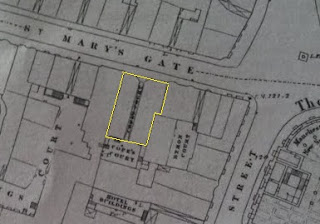Drop Forge, Greenside Street, Openshaw. (c) D.N. at ManMates Facebook [1].
"When we first moved up to Openshaw village there was some nice shops. Where they have built the family housing now there used to be a pub called Drop Forge, there was a newsagents, there was a chippy, there was a vegetable shop and there was a paper shop [2]." The Drop Forge stood on Greenside Street, towards the top end near Clayton Lane where the new houses are. The 1984 snippet from the London Gazette, below, names Michael and Jennifer McGuigan as publicans at the Drop Forge. In its last days in the late '80s, early '90s, it was listed as selling Websters Bitter [3].
"When we first moved up to Openshaw village there was some nice shops. Where they have built the family housing now there used to be a pub called Drop Forge, there was a newsagents, there was a chippy, there was a vegetable shop and there was a paper shop [2]." The Drop Forge stood on Greenside Street, towards the top end near Clayton Lane where the new houses are. The 1984 snippet from the London Gazette, below, names Michael and Jennifer McGuigan as publicans at the Drop Forge. In its last days in the late '80s, early '90s, it was listed as selling Websters Bitter [3].
Drop Forge, Greenside Street, Openshaw. (c) London Gazette.
1. www.facebook.com/ManMates.co.uk.
3. Ale of Two Cities, Real Ale and Real Pubs in Manchester and Salford, CAMRA (1989).


























.jpg)





















